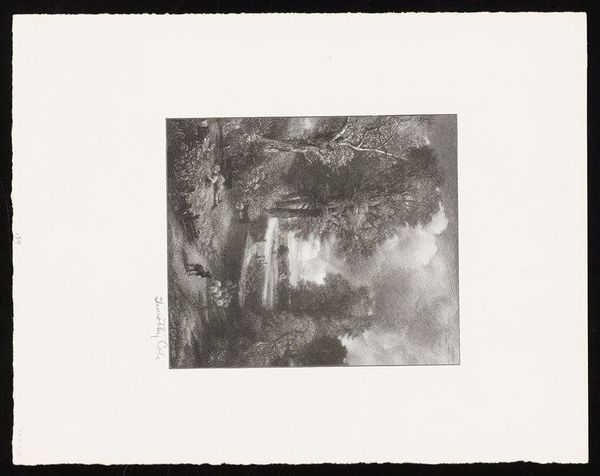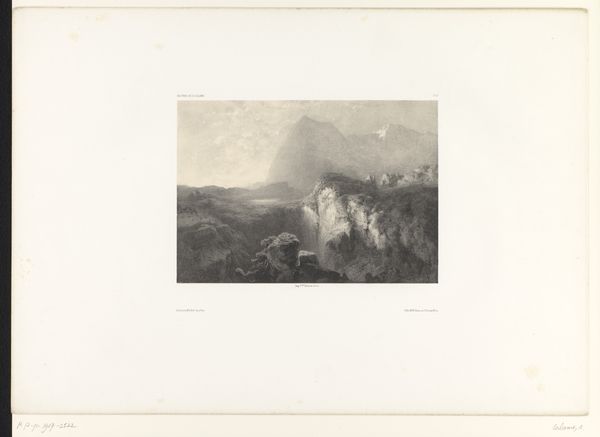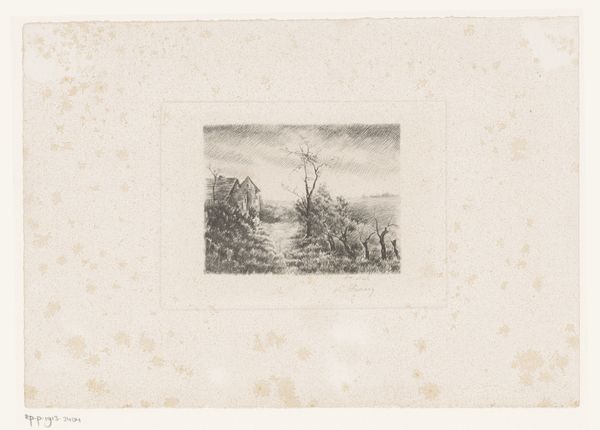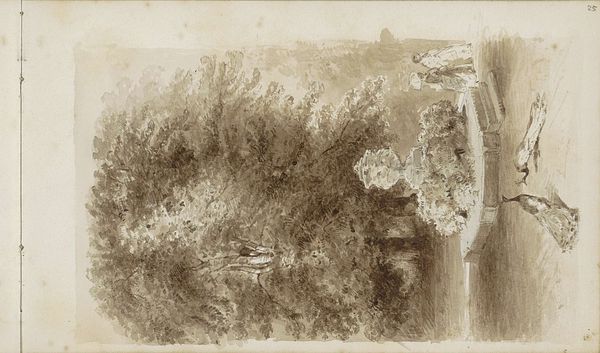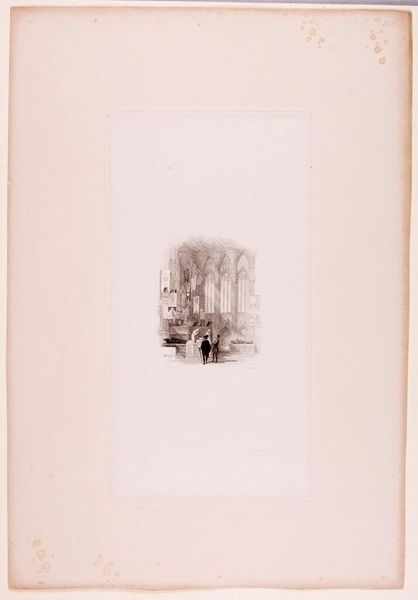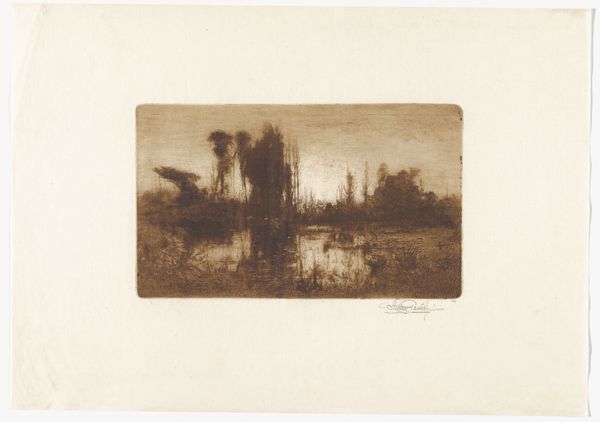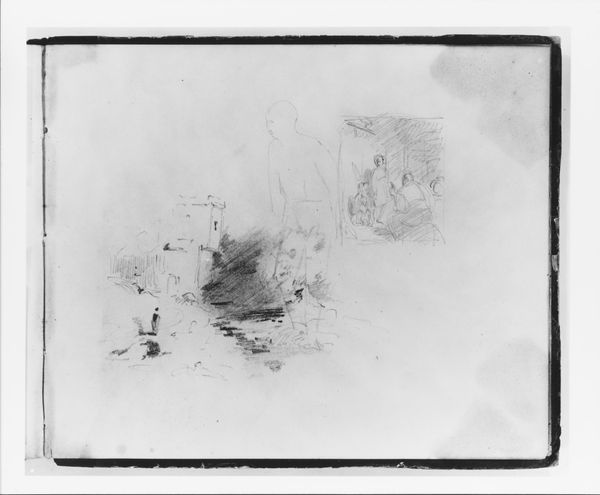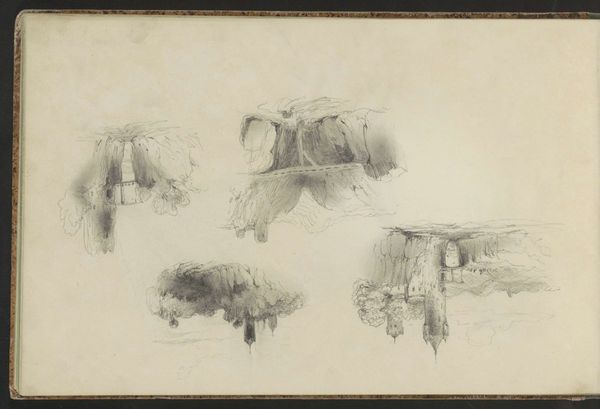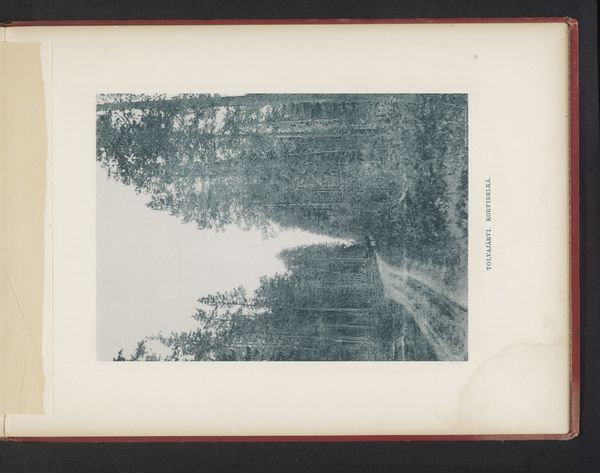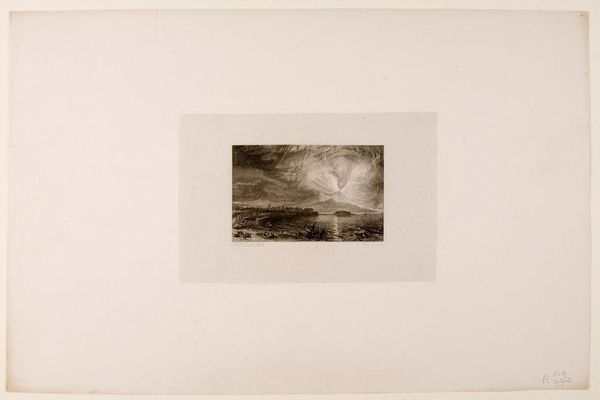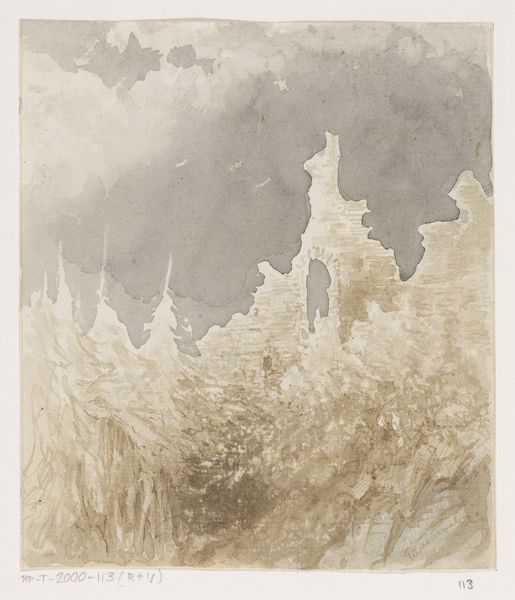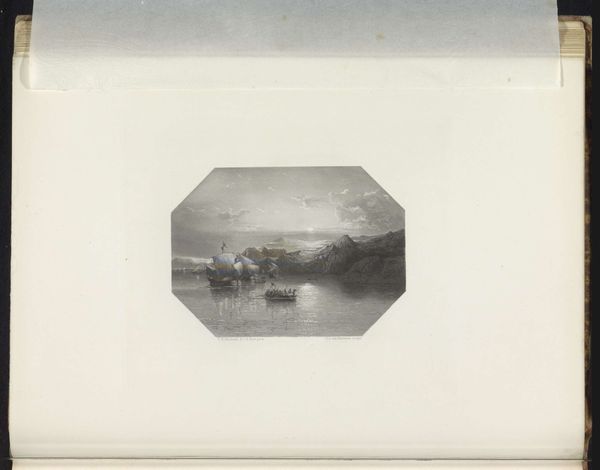
View on Lake Superior (from McGuire Scrapbook) 1801 - 1846
0:00
0:00
drawing, watercolor, ink, pencil
#
drawing
#
lake
#
landscape
#
watercolor
#
ink
#
romanticism
#
pencil
#
charcoal
Dimensions: 3 7/8 x 6 5/8 in. (9.8 x 16.8 cm)
Copyright: Public Domain
Editor: This is Henry Inman's "View on Lake Superior" from the early to mid-1800s. It's done with pencil, ink, and watercolor, and what strikes me is this sort of sublime stillness of the landscape. What’s your interpretation of this piece? Curator: That stillness is potent, isn’t it? Considering the context, Inman painted this during a period of intense westward expansion and resource exploitation in the United States. Think about Manifest Destiny. How does this romanticized view of the unspoiled wilderness potentially participate in that ideology? Editor: That’s interesting. I hadn’t considered the political aspect. I was mainly drawn to the artistic representation itself and not the social statement. Curator: Exactly. Romanticism often glossed over the realities of colonial violence and the displacement of Indigenous populations. While celebrating the landscape’s beauty, it could simultaneously justify its appropriation. Do you see the potential tension there? Editor: Yes, it’s becoming clearer now. The beauty almost feels like a cover for something darker. Like a justification as you mentioned. Is that a common theme? Curator: Very much so. Many landscape paintings from this era can be seen as complicit in promoting a particular narrative, one that naturalizes dominance and erases histories. Inman’s portrayal, while aesthetically pleasing, omits the human cost. It represents nature as passive, open for taking. Editor: I see. So, it’s less about the objective beauty and more about the story the artist chooses—or doesn’t choose—to tell. I am not sure how to reconcile the artistic with the social dimensions here. It's fascinating how a simple landscape can be a mirror reflecting back some pretty unsettling truths. Curator: Precisely! The silences are as important as what is shown. Art challenges us to actively examine whose perspectives are centered and whose are marginalized. It allows us to understand, through these "simple" landscapes the colonial legacy.
Comments
No comments
Be the first to comment and join the conversation on the ultimate creative platform.
